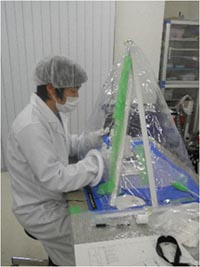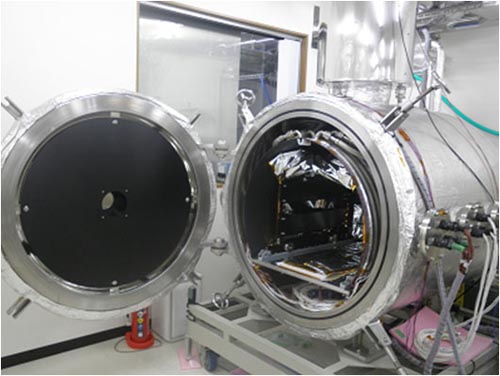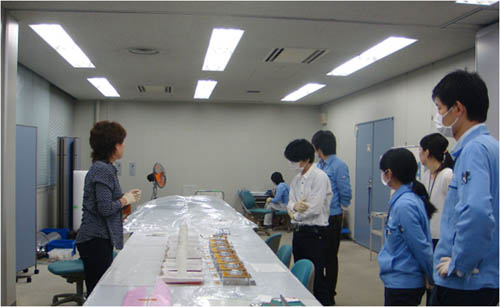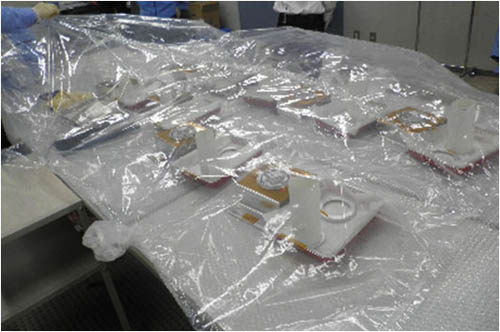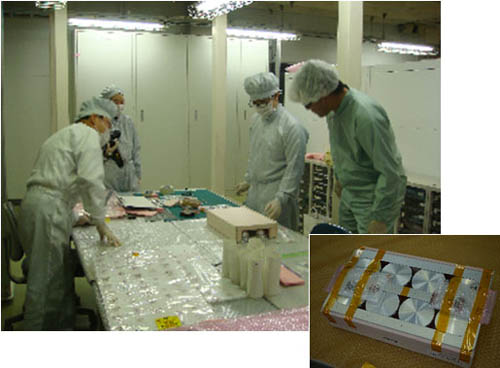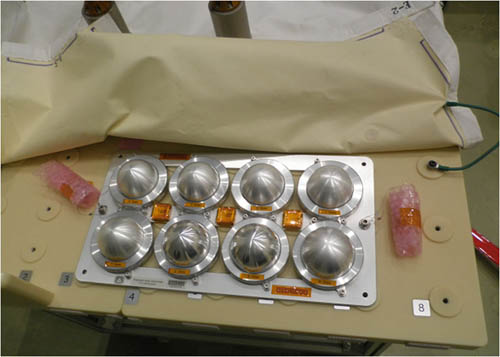This is an archive of information released in the past.
Disclaimer: It may contain broken links or outdated information. Some parts may not function in current web browsers.
*Visit https://humans-in-space.jaxa.jp/en/ for the latest information.

Experiment
- News
- Kibo Utilization Strategy
- Kibo Utilization Plan
- List of JAXA's Utilization Themes
- Experiment Facilities
- Space Environment Utilization
- Archive
Free-Space PADLES
News
- Free-Space PADLES conducted (July 14, 2015)
Link
Responsible unit:
JEM Mission Operations and Integration Center
Human Spaceflight Technology Directorate
JAXA Tsukuba Space Center
What is Free-Space PADLES?
PADLES (PAssive Dosimeter for Life science Experiments in Space) is the Japanese dosimeter developed by JAXA and it consists of a dosimeter and an automated measurement and analysis system. Its original measurement method was jointly developed by Waseda Universityand Nihon University. JAXA developed PADLES for use in space with the assistance of the High Energy Accelerator Research Organization (KEK) and National Institute of Radiological Sciences (NIRS).
The PADLES dosimeter comprises two types of space radiation detectors: plastic Solid State Track Detectors called SSTDs (CR-39) and Thermoluminescent Dosimeters (TLDs) that are sealed in aluminum heat-sealed bags. However, in the exposed space environment subject to fluctuations in partial pressure of oxygen, PADLES is unable to obtain an accurate dose level. For this experiment, a domed aluminum case 6.4 cm in diameter was developed to maintain long-term pressure of 1 atm.
This aluminum case that contains the dosimeters and temperature sensors is collectively called Free-Space PADLES. Aluminum cases of different thickness ranging from 0 mm (uncovered), 0.3 mm, 0.6 mm, 0.9 mm, 1.2 mm, 1.5 mm, 2.0 mm and 3.0 mm to 4.0 mm are available to obtain data on radiation decay based on thickness.
Development of Free-Space PADLES
For JAXA, this experiment marks the first time that dosimeters have been exposed to the space environment. To obtain accurate data, some of the PADLES dosimeters must be maintained at 1 atm.
PADLES must be contained in a case that can maintain 1 atm for exposure to the space environment. However, when PADLES is contained in a sturdy case, it can withstand a vacuum environment, that is, the internal environment. Thus, the conflicting challenge of “making a case as thin as possible, as well as sturdy as possible” began.
Through a study of processing technology to create the thinnest possible case, an assessment of durable structures in a vacuum, and extensive vacuum testing and exposure to conceivable heat environments, the development of the Free-Space PADLES case was finally completed.
An aluminium cover is subjected to the conceivable vaccums in high and low temperature environments to assess quality.
PADLES dosimeters and temperature sensors are contained in each aluminum cover. Prior to assembly, PADLES development members check all the parts.
All parts are assembled in a glove box under controlled temperature and humidity conditions.
A set of Free-Space PADLES is carefully packed for delivery to space via the U.S.
The interface between Free-Space PADLES (flight model) and the Multi-Purpose Experiment Platform (MPEP) is tested on the ground.
Start of the first experiment
On June 1, 2015, Free-Space PADLES experiment to investigate the space radiation dose outside the Japanese Experiment Module “Kibo” began.
For this experiment, the Passive Dosimeter for Lifescience Experiments in Space (PADLES), the dosimeter exclusively developed in Japan was renovated for use in the exposed space environment. PADLES is attached to the edge of the Kibo’s robotic arm, the Japanese Experiment Module Remote Manipulator System (JEMRMS), in order to measure the radiation dose in space at an altitude of 400 km.
Area PADLES are concurrently set in the interior of Kibo to measure the radiation dose inside Kibo. By comparing the doses measured between the exterior and interior sides of Kibo, an evaluation of the radiation shielding capability of Kibo’s hull wall becomes possible. This marks the first time ever that the radiation shielding of an on-orbit ISS module could be actually evaluated.
PADLES is acknowledged as being the most accurate dosimeter based on the results of accelerator tests conducted on the ground (Intercomparison of the Response of Space Radiation Dosimeters and Spectrometers to Heavy Ion Beams at the Accelerator Facilities). The results of this experiment using PADLES will provide basic data useful for the risk assessment of Extravehicular Activities (EVA), and the assessment and optimization of hull wall thickness for manned spacecraft.
Preparation on Kibo
Free-Space PADLES was launched aboard the SpaceX CRS-6 on April 15, 2015 from the Cape Canaveral Air Force Station in the U.S., and then delivered to Kibo. On May 14, NASA Astronaut Scott Kelly attached it to the Multi-Purpose Experiment Platform (MPEP) on the slide table of Kibo’s airlock. The slide table was retracted into the airlock, which was then internally depressurized.
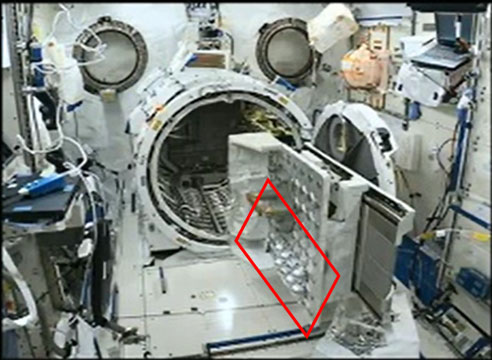
Free-Space PADLES attached to the MPEP (May 14, 2015)
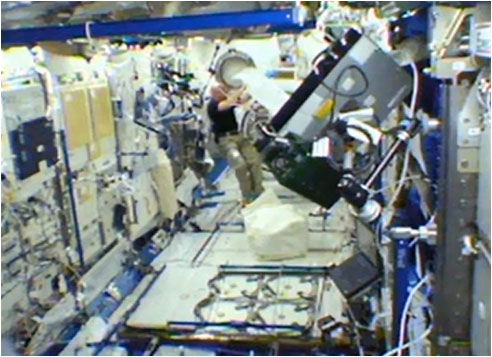
Kelly covers Free-Space PADLES with Multi Layer Insulation (MLI) (May 14, 2015)
Exposure to the space environment
On June 1, 2015, ESA Astronaut Samantha Cristoforretti extended the slide table out to the outboard side. Under remote control operation from the Tsukuba Space Center (TKSC), the MPEP was then grappled by Kibo’s robotic arm, JEMRMS and moved to the optimal position for measuring space radiation, as determined by computational estimates. The MPEP remained at that position for two weeks to enable measurement of space radiation on the exterior of Kibo.
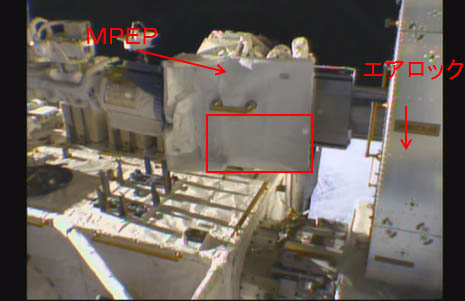
Free-Space PADLES pushed out to the outboard side for exposure to the space environment
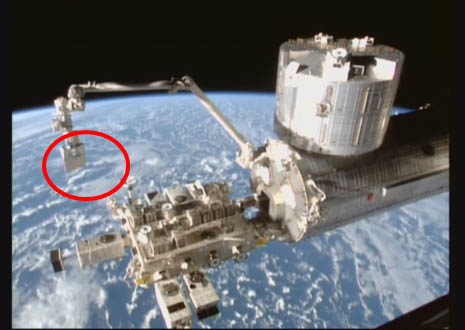
Free-Space PADLES being positioned in the exposed space environment
Free-Space PADLES being transferred and positioned [WMV: 1min., 46 s, no sound. Credit:JAXA/NASA]
| Copyright 2007 Japan Aerospace Exploration Agency | Site Policy |
